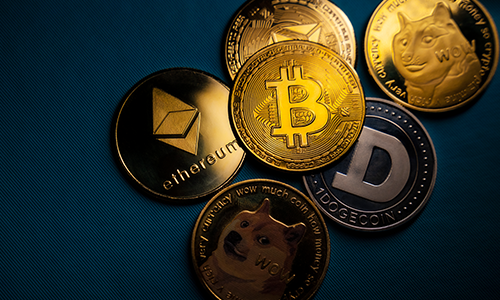The concept of NFTs came like a storm upon the digital world. It has completely revolutionized how we think about digital assets and trade them. We have seen everyone, from artists to gamers and even people in virtual real estate, use NFTs as a form of digital ownership. But what about cryptocurrencies? Do they play a role in NFTs? While cryptocurrency and NFTs are often mentioned together, it is vital to understand their relationship. In this article, we will explore the concept of NFTs, how the digital industry steadily tries to role of cryptocurrency in NFTs, and how they work together to create a thriving digital marketplace for platforms like Chainers.

Understanding NFTs
Non-fungible tokens, or NFTs as they’re mostly called, are digital assets representing ownership or proof of authenticity of a unique item or piece of content. The difference between NFTs and cryptocurrencies like Bitcoin and Ethereum is that cryptos are fungible. They can be exchanged for one another; NFTs are not divisible; they cannot be replaced by anything else. That’s the whole essence of the non-fungible in NFTs. Every NFT has unique characteristics and metadata that differentiate it from other tokens. Every NFT is one-of-a-kind.
How Do NFTs Work?
Just like cryptocurrencies, NFTs are built on blockchain technology. Blockchains use cryptographic principles to record transactions publicly and permanently. Each NFT gets a unique cryptographic token that shows proof of ownership. This makes NFT transactions both transparent and secure. While blockchains like Binance Smart Chain and Flow are also becoming more popular, Ethereum is the most frequently used blockchain for NFTs. When an NFT is created, a smart contract is deployed on the blockchain that contains the ownership and transfer rules for that specific NFT. The ownership of an NFT can then be transferred from one person to another through peer-to-peer transactions.
The Role of Cryptocurrency in NFTs
While they’re different from each other, cryptocurrency plays a significant role in the world of NFTs in the following ways.
Medium of Exchange
Cryptos are the primary medium of exchange for buying, selling, and trading NFTs. Most NFT marketplaces, like OpenSea and Rarible, use cryptocurrency as the primary medium of exchange. Ethereum (ETH) is the most widely accepted cryptocurrency for NFT transactions, but many marketplaces accept other cryptocurrencies, too. By extension, this makes cryptocurrencies a store of value for NFTs.
Trust and Authenticity
Blockchain-based cryptocurrencies, like Ethereum, bring a high level of trust and authenticity to the NFT ecosystem. The decentralized nature of blockchain technology ensures that no records and transaction history can be manipulated or tampered with so buyers can verify the authenticity of an NFT before buying it.
Decentralized Marketplaces
More than ever before, people now yearn for privacy in the crypto space. The impact of crypto on NFTs has brought decentralization into NFT marketplaces. NFT platforms now operate on the blockchain, allowing NFT artists to directly connect with buyers without intermediaries, giving them greater control over their work and a larger share of their sales. The decentralization also makes NFT platforms more inclusive and diverse since anyone, anywhere in the world, can buy and sell anytime.
Challenges Of Cryptocurrency and NFTs
High Transaction Fees
As good as NFTs and cryptocurrencies are, one big issue with using cryptocurrency for NFT transactions is the high transaction fees. Ethereum, the most commonly used blockchain for NFTs, now has high transaction fees because of congestion and scalability issues. These high fees can make NFT transactions costly for buyers and sellers in the NFT market, especially for lower-priced digital assets like gaming items. High gas fees could also discourage newbies who are just starting out in the industry.
Environmental Impact
One more challenge is the environmental effect of crypto mining. Cryptocurrencies are mined through a process that requires enormous computational power and energy consumption. This has raised concerns about the carbon footprint associated with NFTs and the overall sustainability of the cryptocurrency industry. But then, efforts are being made to reduce their environmental impact. For example, more energy-efficient blockchains are being developed, and proof-of-stake consensus algorithms that use less energy are being adopted.
Conclusion
Of course, cryptocurrencies and NFTs are not the same thing, but cryptocurrency plays an essential role in the world of NFTs. It is not limited to the world of NFTs alone; it also impacts the entire marketplace, like in virtual real estate and gaming industries. Because of crypto, buyers and sellers can transact securely, and transactions are now more transparent and trusted because of the decentralized marketplaces.
The rise of NFTs, NFT trading, and even the unique nature of NFTs would only be possible with cryptocurrencies. Crypto gives the infrastructure for NFTs; it provides everything from the creation, ownership, and transfer of NFTs. As the NFT and crypto spaces evolve, their relationship will undoubtedly shape the future of digital art and collectibles.




